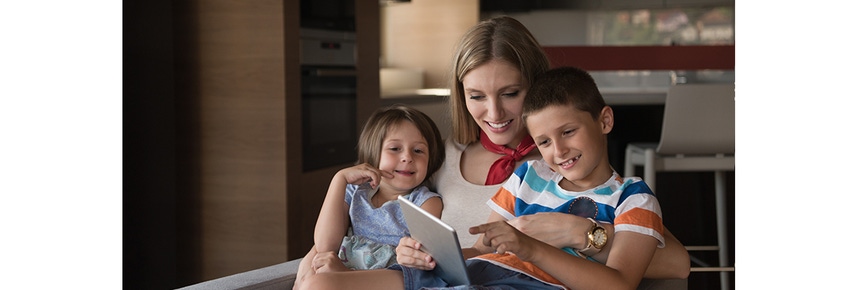
Positive Screen Time
Article: How to help your kids switch on without tuning out
Significant time spent watching or interacting with a screen is a reality for children in the modern world.
While digital technology offers benefits and is now part of everyday life, the evidence of the importance of face-to-face human interaction and connection for normal development and learning is overwhelming.
The challenge is to ensure the time spent on screens is as positive as possible.
Without appropriate controls, children can become hyper-connected and hyper-alert, a state that is detrimental to focus, attention and mental wellbeing.1
Screen time is designed to be addictive and can displace activities necessary for well-being. This includes sleeping, playing outside, communicating with friends and with family face-to-face, finishing schoolwork or simply resting and dreaming.
For younger children, unsupervised use of screens while a child is sedentary for long periods of time, is often at the expense of social interaction with parents and carers. This can lead to language delays, reduced attention spans, lower levels of school readiness and poorer decision-making.
But screen time can be interwoven into family time, where online activities, movies or a TV series, can be watched together. Become involved with your child’s program and game choices and actively engage in the things that interest them.
Usage limits for screen-based games can be established and extra time should not be used as a reward.
It is important that there is also screen-free family time especially during meals, play, socialising and relaxation.
The Little People, Big Lives report recommends that families take steps to:
- Have clear rules for screen times
- Plan offline activities to ensure balance
- Locate devices in a shared or visible space
Download the full report here and watch the video below to hear from mum Kylie Alvarez on the practical ways she encourages positive screen time with her son.

The latest nutrition advice, plus health and wellness tips delivered to your inbox monthly

